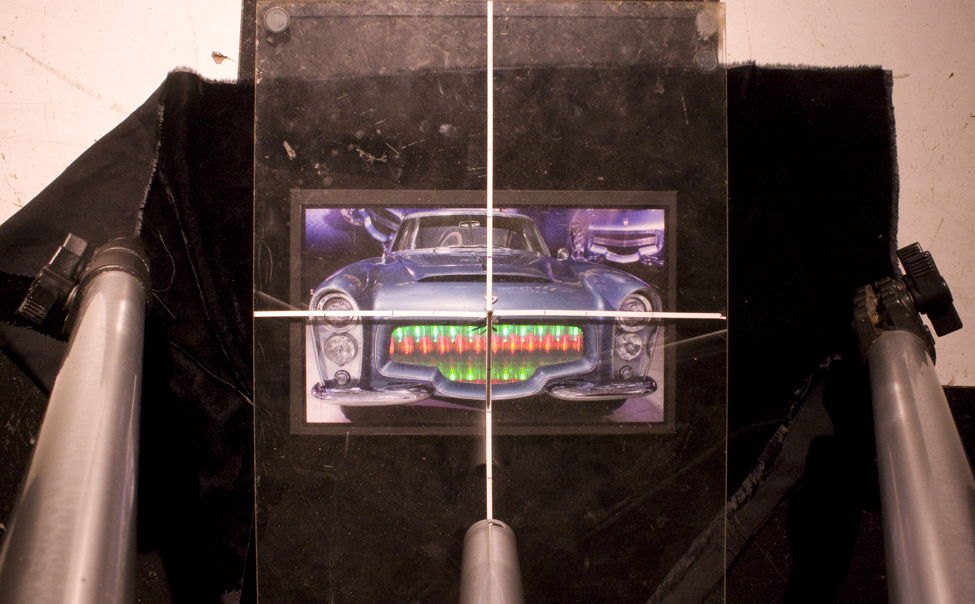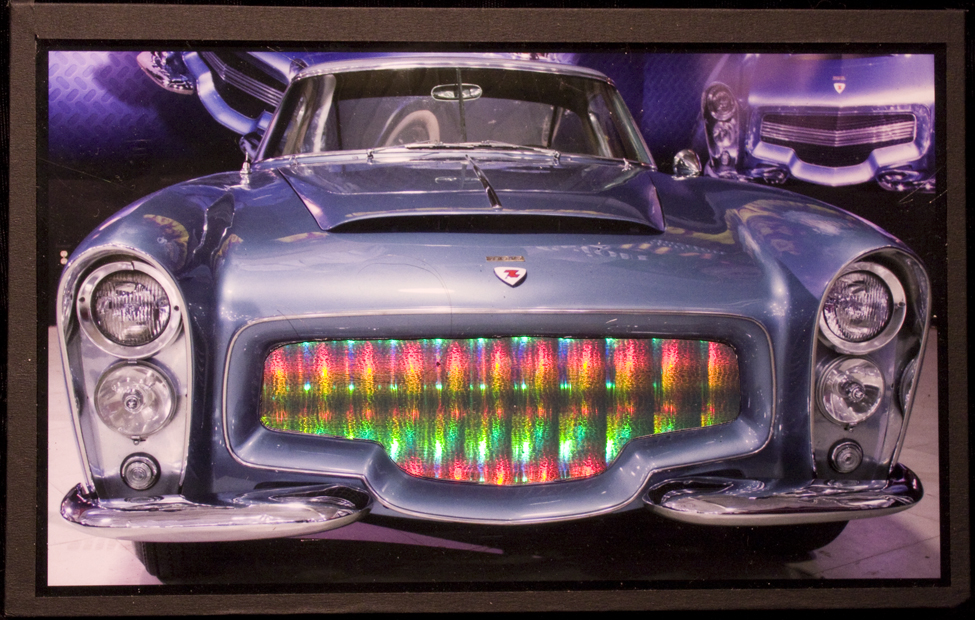
Here's a tip that makes photographing front-lit holograms a cinch! Don't handhold the holo, or mount it on the wall, simply lay it on the floor! Flatten it into submission if necessary with tape or plopping a piece of glass atop it. If reflections off of the glass are bothersome, turn off the room lights.
Putting as much distance as possible from the replay light to the hologram so that its quasi-Gaussian beam spread is nicely and evenly spread across the hologram, without a hot spot in the center, makes for a much more enjoyable viewing experience, without a blown out center with dim edges. The hologram can be moved closer or further from the light along the floor to vary the reference angle.

The appropriate reference angle can be found simply by sliding the hologram along the floor closer or further from the light fixture, and looking for the brightest replay. Some re-aiming of the light source maybe necessary to accomodate the change in position.
Black velvet serves as a great background to lay unvarnished glass plates upon, and attached to the tripod legs it can hide their pesky reflections off the hologram's glass surface.

Placing piece of Plexiglas with a nail sticking out of it perpendicularly as a normal/gnomon guides the camera into looking straight at the hologram when only the tip of the nail and not its shaft is visible. The shadow of the nail on the white tape gives a reading of the reference angle, like when the angle of incidence is 45°, the shadow is the same size as the nail. Barely visible in this photo are calibration marks for 15, 30, 45, and 60 degrees.

A short telephoto lens with close focusing capability is the lens of choice, as the holos are usually not so big, so you would have to move in close to fill the frame with the holo image, but sometimes you need to be further back to be in the sweet spot of the viewing window. Sharp eyed viewers might notice a film camera in use in these photos, but it is only sitting in for the dSLR, as it's not so easy to take a picture of a camera as while it is being used.
And here is the proof of the pudding, a photo of MyCar, 2020.

Photographing with a phone camera may be a bit more tricky, as their lenses are more in the wide angle category and force the photographer to move in way too close, possibly renderng the holographic image to be barrel distorted, plus it might not be in the correct spot to see all the image simultaneously, especially a problem in the case of embossed holograms. If the camera has a telephoto capability that would help matters.
The big attraction in using a phone camera is in its video capacity. Videos will come out smoother if both hands handle the phone, insted of one hand on the holo and the other on the phone. Then the only thing one has to be careful about while holo-dancing bent over 90° recording to your heart's content all the different angles of view is to not spazz out and step on the piece!